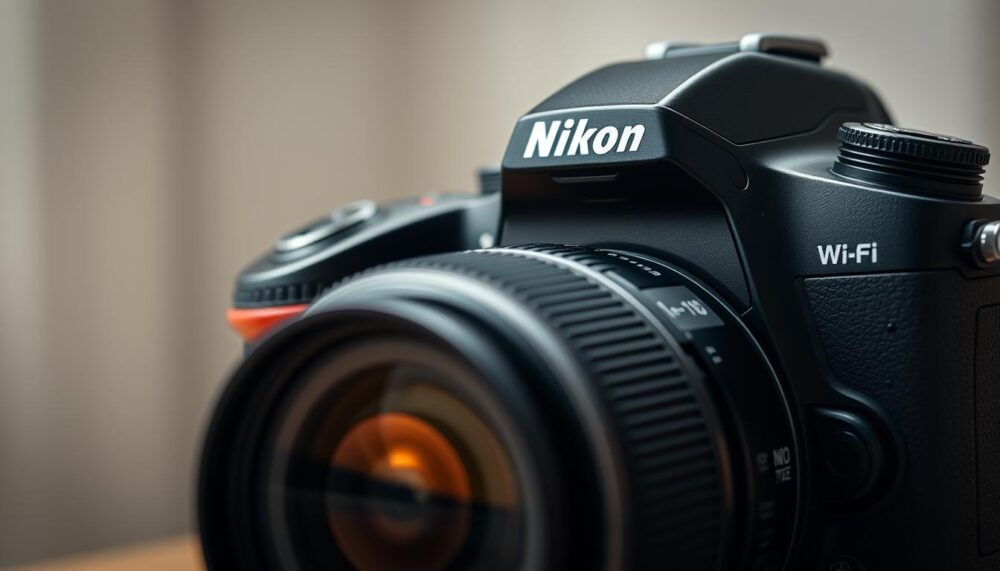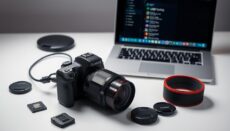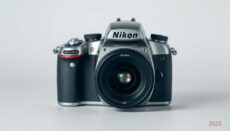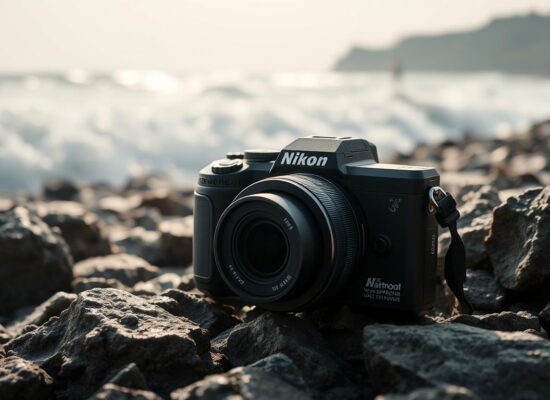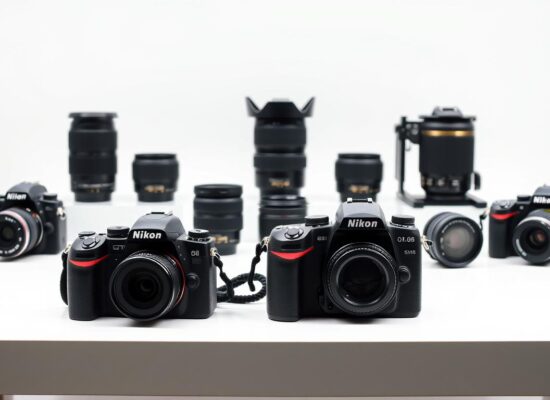In today’s digital age, sharing memories instantly has become a necessity. For Nikon users, wireless photo sharing offers a seamless way to move images from their device to other platforms. This guide simplifies the process, ensuring even beginners can master it effortlessly.
Whether you’re capturing moments outdoors or preparing content for social media, wireless transfers eliminate the need for cables. Modern Nikon models support direct connections and SnapBridge integration, making the process quick and efficient. This step-by-step approach ensures you can enjoy instant sharing without technical hurdles.
From entry-level to mid-range models, this guide caters to all. It also includes expert tips from Nikon School professionals, ensuring you get the most out of your device. Stay tuned for detailed instructions in the following sections.
Key Takeaways
- Wireless transfers simplify sharing images from your device.
- Direct connections and SnapBridge integration are supported.
- Eliminates the need for cables, enhancing convenience.
- Suitable for both entry-level and mid-range models.
- Expert tips ensure optimal use of your Nikon camera.
Introduction to Transferring Photos Wirelessly
Wireless technology has revolutionised the way we handle our creative work. Nikon has evolved from early infrared systems to advanced Wi-Fi and Bluetooth capabilities, offering seamless connectivity for modern photographers.
One of the standout advantages is the ability to share images instantly. This eliminates the need for cables, making the process faster and more efficient. Whether you’re creating backups or engaging in remote shooting, wireless systems provide unparalleled convenience.
To connect camera to a smart device, you’ll need a compatible Nikon model, such as the D5500, D780, or Z series. Ensure your camera smart device has the SnapBridge app installed for smooth integration. Supported platforms include iOS and Android smartphones and tablets.
This technology is ideal for various scenarios, from travel photography to professional workflows. However, it’s essential to note potential limitations, such as internet disconnections during direct transfers or file format conversions.
When using public Wi-Fi, always prioritise safety. Nikon’s ecosystem, including the Wireless Mobile Utility and Image Space cloud, further enhances the experience, making wireless transfers a reliable choice for photographers.
Preparing Your Nikon Camera and Smart Device
Proper preparation of your devices is key to seamless connectivity. Before initiating any wireless activity, ensure both your Nikon camera and smart device are ready for the process. This involves checking compatibility, charging batteries, and configuring essential settings.
Ensure Compatibility
First, verify that your camera model, such as the D5500, D780, or Z series, supports wireless features. Your smart device must also meet the required OS version—iOS 15 or Android 10 and above. Install the SnapBridge 2.6.2+ app or Wireless Mobile Utility for smooth integration.
Additionally, ensure both devices have Bluetooth and Wi-Fi hardware enabled. Firmware updates through Nikon’s official channels may be necessary for optimal performance. Disable VPNs and enable camera discovery mode to avoid connection issues.
Charge Your Devices
A stable connection requires sufficient battery power. Ensure both your camera and smart device are charged to at least 50%. This minimises the risk of interruptions during the process.
Prepare your memory card by formatting it to FAT32 and ensuring ample storage space. Location services should also be enabled for geotagging compatibility. These steps ensure a hassle-free experience when you connect smart device to your camera.
By following these guidelines, you’ll be well-prepared to navigate the setup menu and configure the necessary settings. Proper preparation not only saves time but also enhances the overall efficiency of your workflow.
Setting Up Wi-Fi on Your Nikon Camera
Configuring your Nikon camera’s Wi-Fi ensures smooth wireless operations. This process involves accessing the setup menu and adjusting network settings for optimal performance. Whether you’re connecting to a smart device or a PC, these steps guarantee a hassle-free experience.
Access the Setup Menu
To begin, navigate to the menu by pressing the button marked with a spanner icon. This opens the setup menu, where you’ll find the network settings option. Select it to proceed with the configuration.
Customising your SSID is recommended in crowded wireless environments. This ensures your displayed camera is easily identifiable. Additionally, enabling WPA2-PSK encryption enhances security during data transfers.
Configure Network Settings
Once in the network settings, choose the Wi-Fi option and enable the network connection. You’ll have the choice between direct PC connection or smart device prioritisation. Ensure your password is secure to protect your camera’s hotspot.
If the SSID is hidden, troubleshoot by manually entering the details. LED indicators, such as blinking or solid Wi-Fi symbols, provide real-time status updates. For failed connections, reset the network and retry the process.
| Setting | Description |
|---|---|
| SSID Customisation | Assign a unique name for your camera’s Wi-Fi network. |
| Security Protocol | Enable WPA2-PSK encryption for secure connections. |
| LED Indicators | Blinking: Searching for network; Solid: Connected. |
| Network Reset | Use this option to resolve failed connections. |
Connecting Your Camera to a Smart Device
Establishing a seamless link between your Nikon camera and smart device enhances your photography workflow. This process involves downloading the right app, pairing the devices, and ensuring a stable connection. Follow these steps to get started.
Download and Launch the App
Begin by installing the SnapBridge app on your smart device. Available on both the App Store and Google Play, this app facilitates the connection between your camera and device. Ensure your device’s operating system is compatible with the app version.
Once installed, launch the app and grant necessary permissions, such as location access. This ensures features like geotagging work seamlessly. If you encounter an error message, check your internet connection or update the app.
Pair the Devices
To pair your devices, navigate to the setup menu on your Nikon camera. Select the icon for smart device connection and initiate pairing. Your displayed camera name will appear on the app. Confirm the pairing request on both devices.
For supported models, QR code pairing is an alternative method. Simply scan the code using your smart device to establish the link. Ensure Bluetooth Low Energy (BLE) is enabled for a smooth handshake process.
- Install SnapBridge from the App Store or Google Play.
- Enable Bluetooth and Wi-Fi on both devices.
- Use QR code pairing for supported models.
- Manage up to five devices simultaneously.
After pairing, verify the connection by checking the app’s status. If issues arise, reset the network settings and retry. With these steps, your Nikon camera and smart device are ready for seamless collaboration.
How to Transfer Photos from Nikon Camera via Wi-Fi
Once your Nikon camera and smart device are connected, the next step is selecting the files you wish to move. This process is straightforward, allowing you to choose individual or multiple pictures with ease. Whether you’re working with RAW or JPEG formats, the camera icon in the playback menu simplifies the selection.
Choosing Your Images
Navigate to the playback menu on your camera to view the stored photos. Use the multi-selector to highlight the desired files. For batch selection, press the option button to tag multiple images. This feature is particularly useful when transferring large quantities of pictures.
Consider the file format before initiating the process. RAW files offer higher quality but take longer to transfer. If speed is a priority, converting them to JPEG is a practical option.
Starting the Transfer
Once your selections are made, press the camera icon to begin the transfer. Ensure your smart device’s storage location is set to save the files in your preferred folder. Background transfer capabilities allow you to continue shooting while the process runs seamlessly.
Verify the success of the transfer by checking the app’s status. EXIF data, including geotags and timestamps, is preserved, ensuring your photos retain their metadata.
| Setting | Description |
|---|---|
| Batch Selection | Tag multiple images for simultaneous transfer. |
| File Format | Choose between RAW for quality or JPEG for speed. |
| Storage Location | Customise the save folder on your smart device. |
| Verification | Check app status to confirm successful transfer. |
Troubleshooting Common Issues
Wireless technology, while convenient, can sometimes present challenges that disrupt your workflow. From connection problems to transfer errors, understanding how to resolve these issues ensures a seamless experience. This section provides practical solutions to common problems, helping you get back on track quickly.

Connection Problems
One of the most frequent issues is a failed connection between your camera and smart device. Signal interference, especially in crowded 2.4GHz bands, can disrupt the network. To resolve this, try moving to a less congested area or switching to a 5GHz band if supported.
Another common cause is power-saving mode, which can disable essential features. Ensure both your camera and device are fully charged and disable any power-saving settings. If the problem persists, reset the network and re-establish the connection.
Transfer Errors
Transfer errors often occur due to buffer overflows or incompatible file formats. To prevent this, avoid transferring large batches of files simultaneously. Instead, opt for smaller groups or convert RAW files to JPEG for faster processing.
SD card errors can also propagate to wireless systems. Ensure your memory card is formatted correctly and free from corruption. If you encounter an error message, check the settings and retry the transfer.
| Issue | Solution |
|---|---|
| Signal Interference | Switch to a less congested frequency band. |
| Power-Saving Mode | Disable power-saving settings on both devices. |
| Buffer Overflow | Transfer files in smaller batches. |
| SD Card Errors | Format the memory card and check for corruption. |
For persistent issues, consider a factory reset as a last-resort option. This restores all settings to default, resolving any underlying configuration problems. Always back up your data before proceeding.
Conclusion
Wireless connectivity has transformed the way photographers manage their creative workflows. By leveraging your camera’s advanced features, you can enjoy seamless transfers and instant sharing. This not only saves time but also enhances convenience, especially for those on the move.
For added efficiency, explore Nikon’s auto-upload feature to Nikon Image Space. This ensures your work is backed up securely without manual intervention. Always prioritise safety when using public Wi-Fi to protect your data.
Regular maintenance, such as firmware updates, keeps your device performing at its best. Nikon’s ongoing advancements in wireless technology promise even more streamlined experiences in the future. For additional support, visit the Nikon School for expert guidance.
Embrace these tools to elevate your photography and stay ahead in the digital age. Check for updates regularly to ensure your smart device and camera remain compatible with the latest features.
FAQ
Is my Nikon camera compatible with Wi-Fi transfer?
Most modern Nikon cameras support Wi-Fi functionality. Check your camera’s specifications in the user manual or on Nikon’s official website to confirm compatibility.
Do I need a specific app to connect my camera to a smart device?
Yes, you’ll need the Nikon SnapBridge app, available for both iOS and Android devices. Download it from the App Store or Google Play to begin the pairing process.
How do I access the Wi-Fi settings on my Nikon camera?
Navigate to the setup menu on your camera. Look for the network settings or Wi-Fi options to configure the connection.
Why won’t my camera connect to my smart device?
Ensure both devices are charged, Wi-Fi is enabled, and they are within range. Restart the camera and smart device, and verify the correct app is installed.
Can I transfer multiple images at once?
Yes, use the playback mode to select multiple images. Follow the prompts in the SnapBridge app to initiate the transfer process.
What should I do if the transfer process fails?
Check your Wi-Fi connection, ensure the app is updated, and restart both devices. If issues persist, consult Nikon’s support resources for further assistance.
Can I transfer RAW files via Wi-Fi?
Some Nikon models support RAW file transfers. Verify your camera’s capabilities in the user manual or app settings.
How do I ensure a stable connection during the transfer?
Keep the camera and smart device close to each other, avoid interference from other devices, and ensure both are fully charged.

